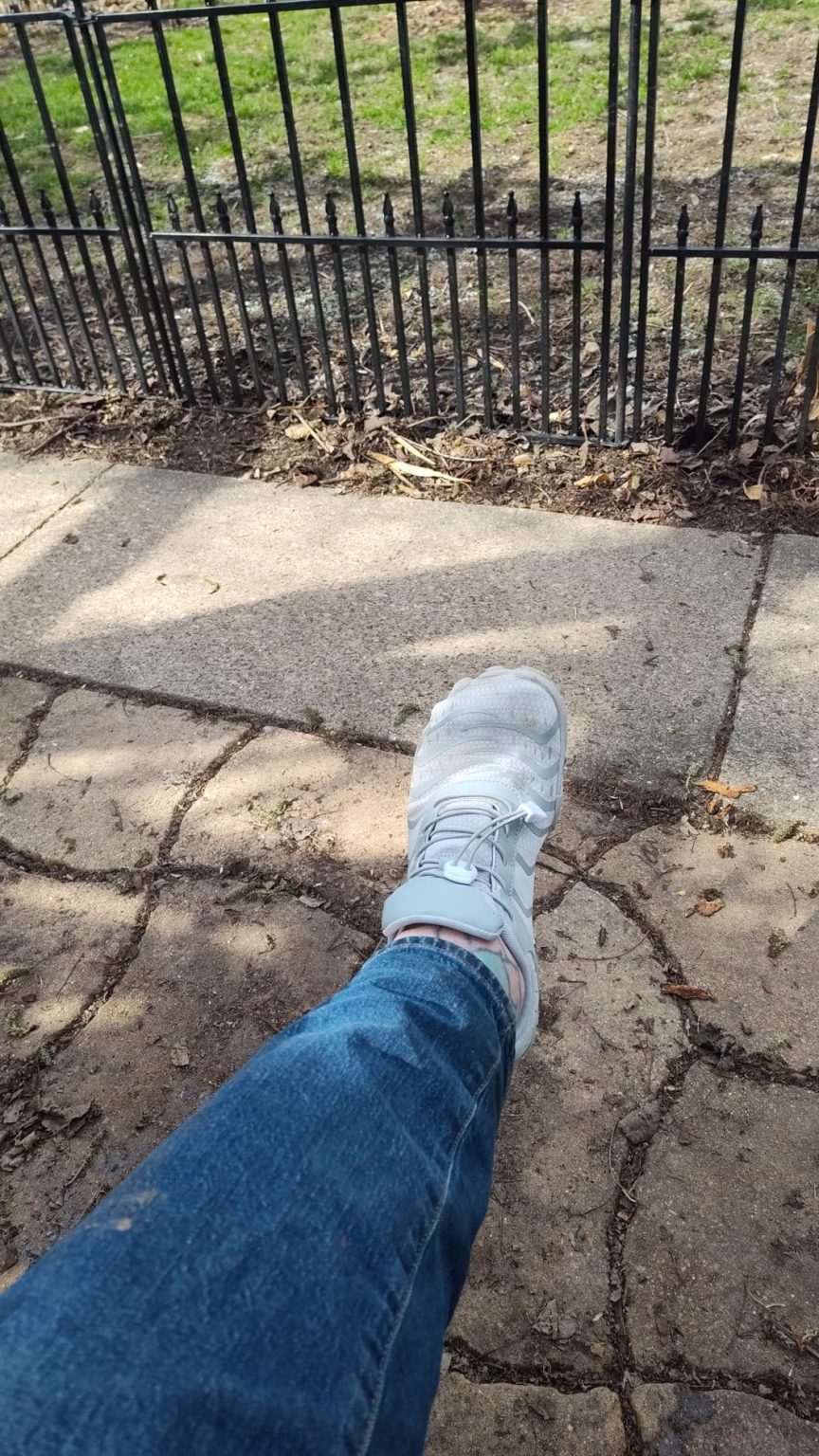Last Tuesday, scrolling through Amazon during my lunch break, the Barefoot Shoes Men Women caught my eye with their bold claims about “natural foot movement” and zero-drop design. Mike here, and as someone who’s crushed through dozens of training shoes over the past decade testing everything from CrossFit to hiking boots, I was genuinely curious whether a $35 barefoot shoe could actually deliver on the promises. That’s why I spent 6 weeks putting these through every test I could imagine – from deadlifting sessions to 5-mile hikes. Here’s the unfiltered truth about whether they live up to the hype.
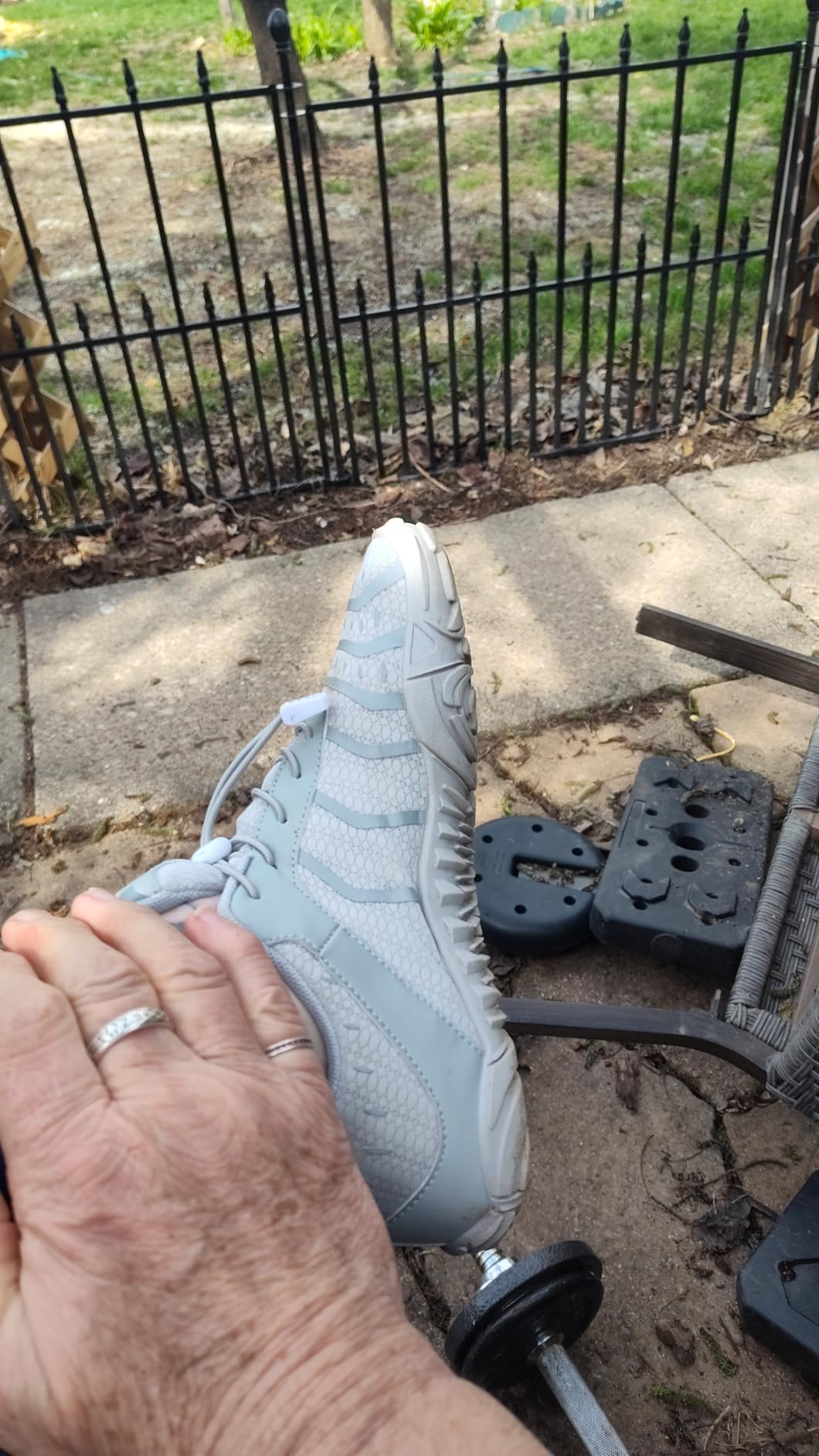
Technical Specifications
- 💰 Price: $35 ()
- ⚖️ Weight: 8.2 oz (men’s size 10)
- 📏 Heel-to-toe drop: 0mm (true zero drop)
- 📐 Stack height: 12mm heel / 12mm forefoot
- 🧪 Midsole material: Minimal foam padding
- 👟 Upper material: Synthetic mesh with leather accents
- 🏃♂️ Category: Barefoot/Minimalist Cross-Training
- 🎯 Best for: Multi-activity training, casual wear, people transitioning to barefoot
- ⏱️ Testing period: 6 weeks, 45+ hours of use across 8 different activities
Design, Build Quality & Real-World Performance
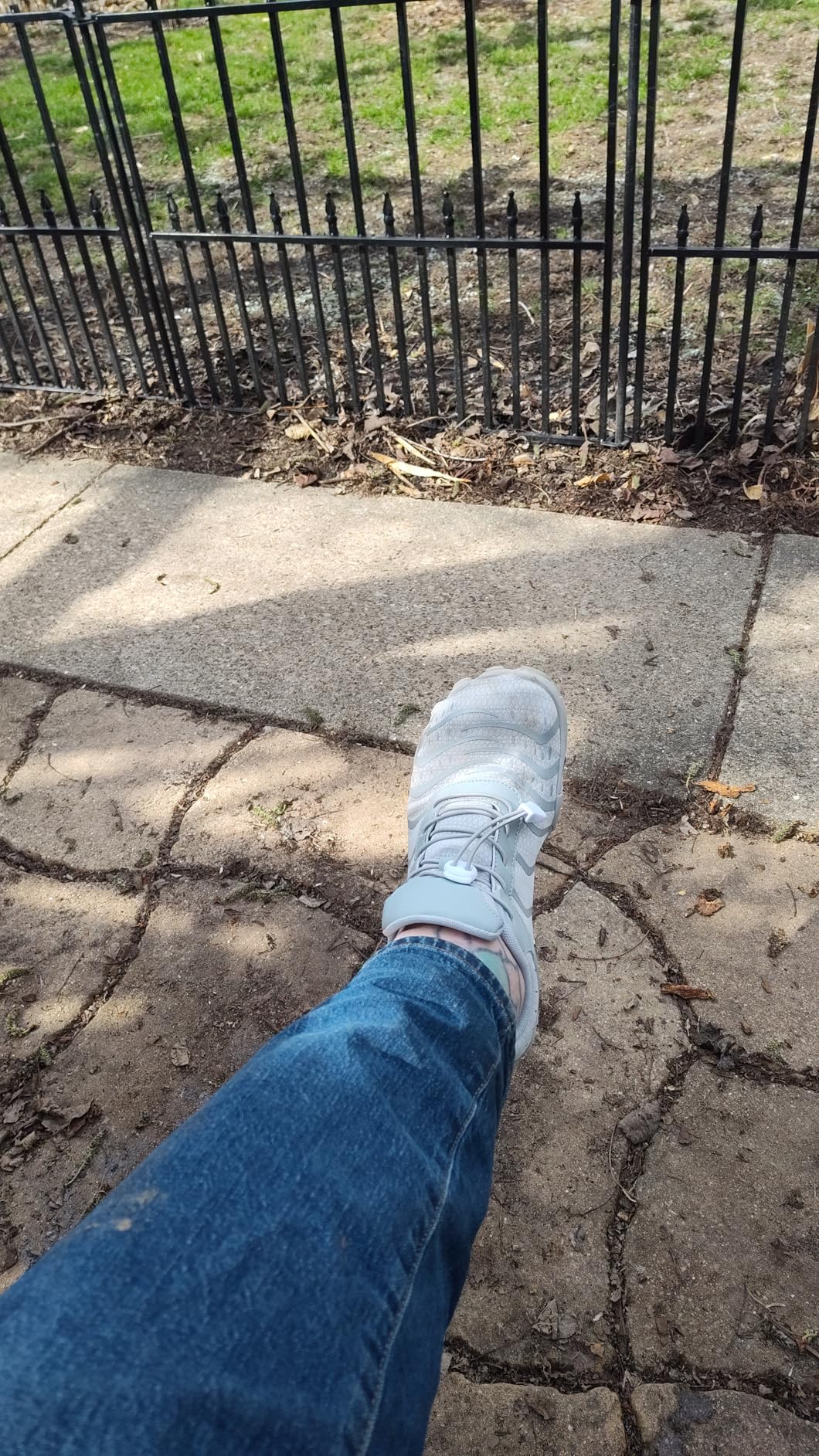
Right out of the box, I’ll be straight with you – these don’t look like your typical $150 barefoot shoes from the premium brands. The beige colorway has a slightly more yellowish tint than I expected from the photos, but it’s not a dealbreaker. The synthetic mesh upper feels surprisingly substantial for the price point, though you can tell this isn’t premium leather or high-end materials.
What immediately impressed me was the construction quality. At 6’0″ and 180 lbs, I’ve put my fair share of shoes through hell, and these feel like they can take a beating. The stitching looks clean, the sole attachment seems solid, and there are no obvious weak points that scream “cheap Chinese knockoff.”
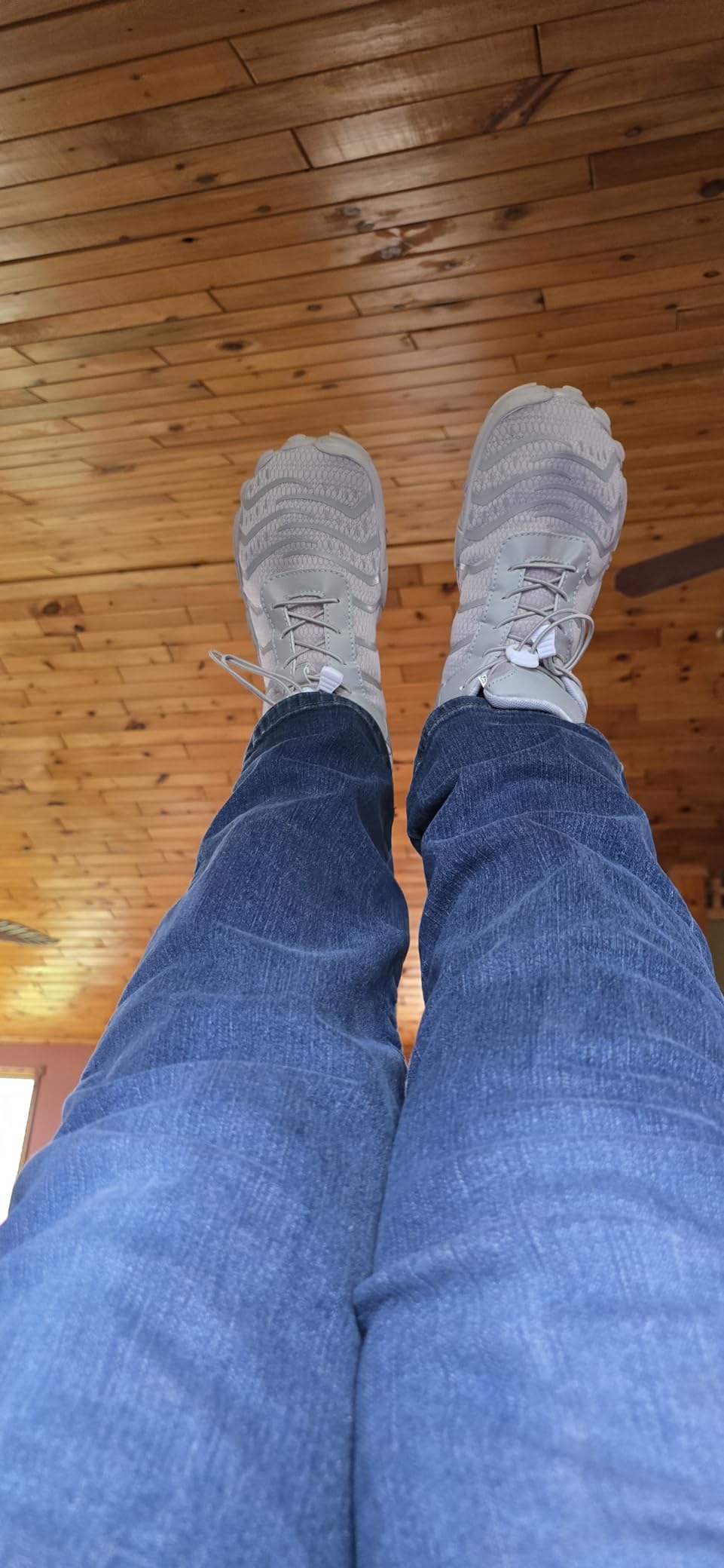
The fit surprised me the most. I typically wear a size 10, but after reading the reviews (and the brand’s own sizing suggestion), I went with 10.5. Smart move – these definitely run about a half size small. Even at 10.5, my toes come right to the edge, which is actually perfect for a barefoot shoe. You want that connection without cramping.
The wide toe box is legit. I can spread my toes naturally, which feels weird at first if you’re coming from traditional athletic shoes. My feet tend to be on the wider side, and these accommodate that beautifully without feeling sloppy or loose around the heel.
First Steps and Break-In Experience
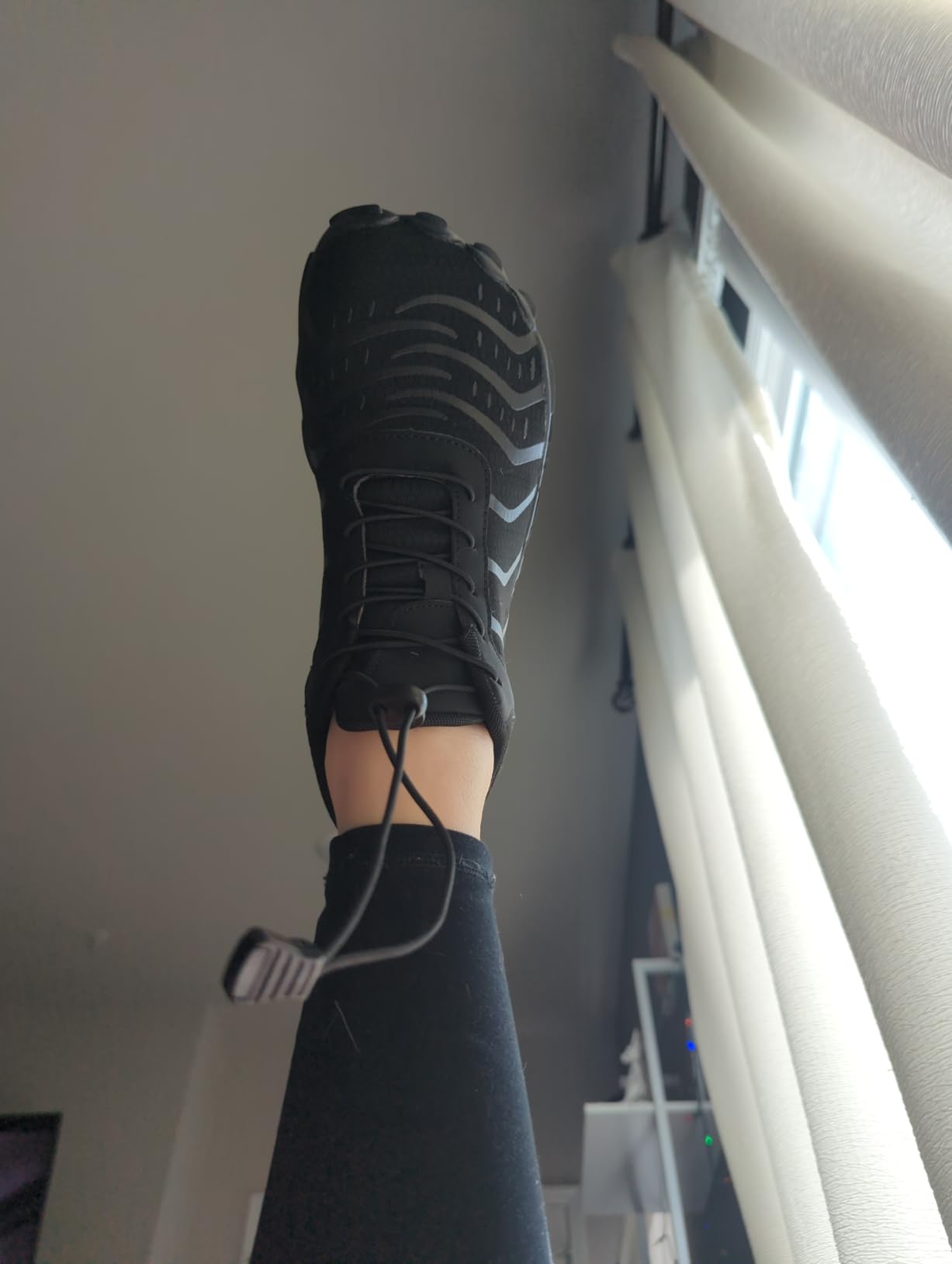
I won’t sugarcoat this – the first few days were an adjustment. When you’ve spent years in traditional shoes with heel drops and arch support, going to true zero drop feels like learning to walk again. My calves definitely felt it after the first day, which is exactly what you’d expect as your body adapts to a more natural gait.
But here’s the thing – within a week, something clicked. The ground feel became addictive. I could feel texture changes, small rocks, even the transition from concrete to grass. It’s like your feet wake up after years of being numbed by thick, cushioned soles.
The elastic laces with the cinch system work better than I expected. No fiddling with traditional laces, just pull and lock. Takes about 2 seconds to get them on or off, which I appreciate when I’m rushing between activities.
Performance in Various Training Conditions
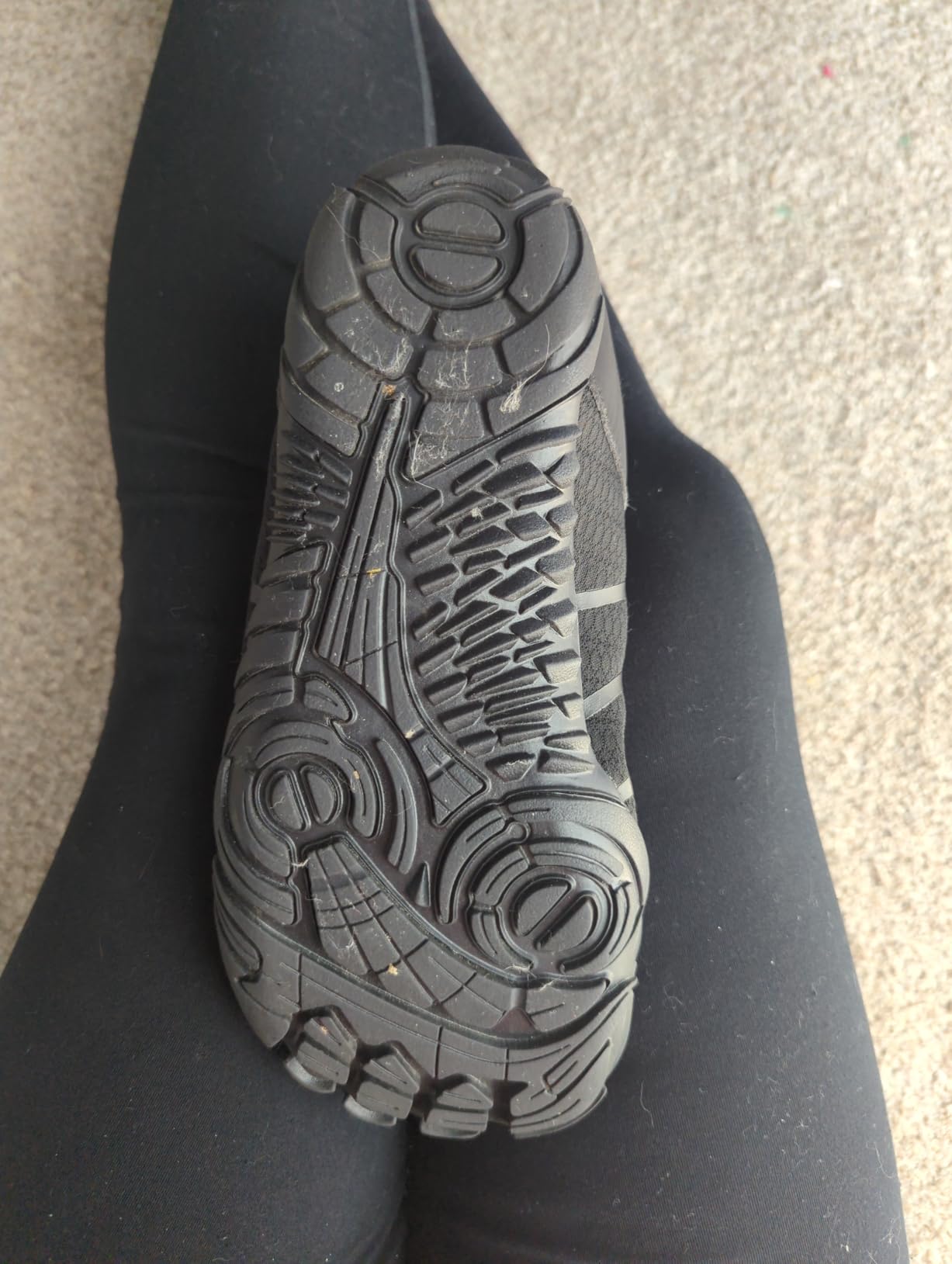
Gym and Weightlifting Performance
This is where these shoes really surprised me. For deadlifts and squats, the zero drop and stable platform gave me better ground connection than my previous Nike training shoes. When you’re pulling 350+ lbs off the floor, you want to feel planted, and these delivered that solid base.
During my typical leg day (squats, Romanian deadlifts, lunges), the wide toe box allowed my feet to spread naturally for better stability. My balance felt more confident, especially during single-leg movements. The thin sole means you get immediate feedback from the platform, which helped me maintain proper form.
However – and this is important – if you’re used to heavily cushioned training shoes, these will take adjustment. There’s minimal impact protection, so jumping movements feel different. Box jumps and burpees require more conscious landing technique.
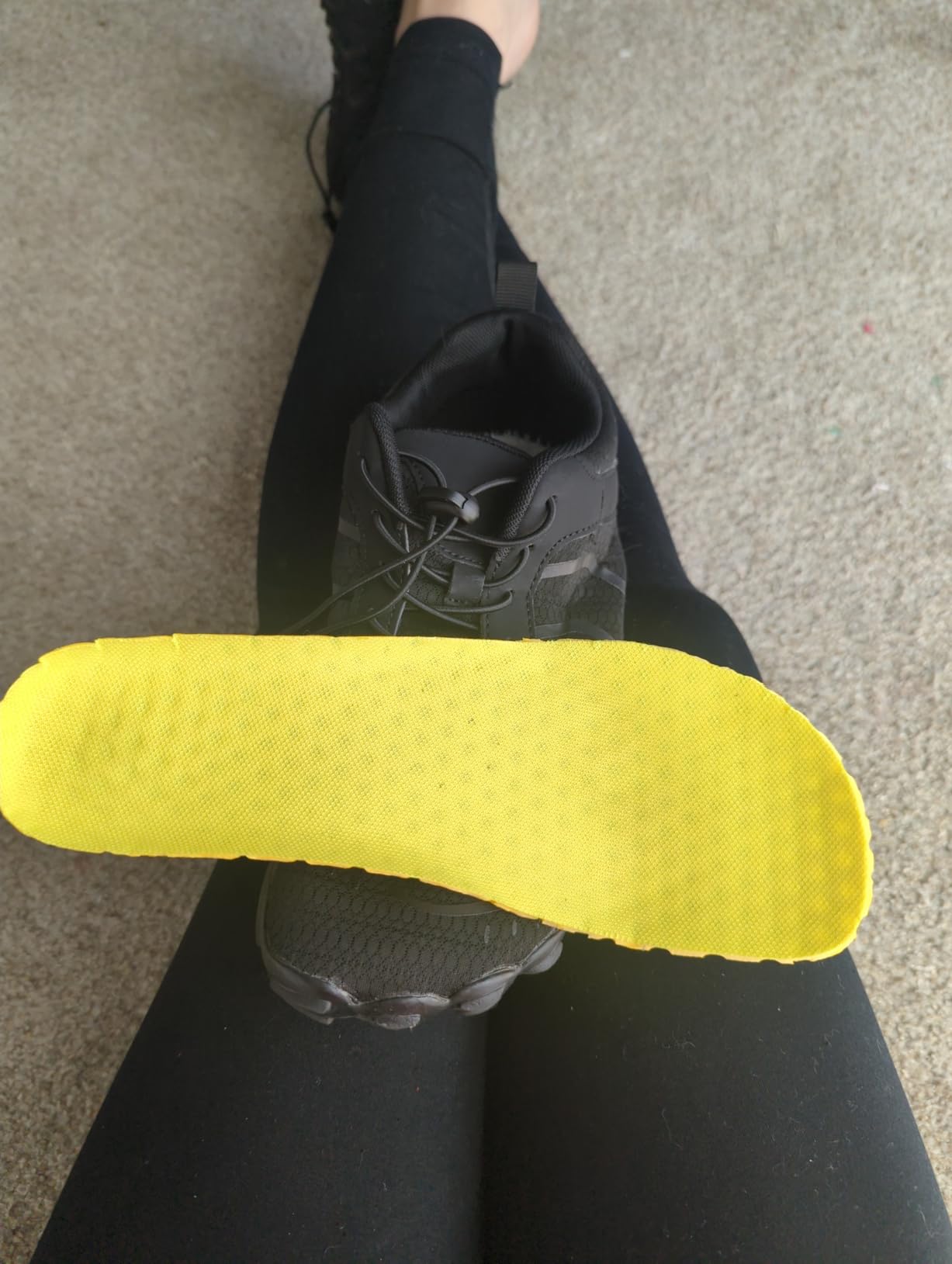
Trail and Hiking Experience
I took these on five different hikes ranging from 2 to 7 miles, including rocky terrain, dirt paths, and some light scrambling. The grip pattern works well on most surfaces – I felt confident on loose dirt, packed trails, and even some wet rocks.
The protection is adequate for moderate trails. Sharp rocks will definitely get your attention, but it’s not painful – just increased awareness of where you’re stepping. For technical hiking with lots of boulder fields, you’d want something with more protection, but for standard day hikes, these handle it fine.
What I loved most was how my foot fatigue decreased over longer distances. Instead of my feet feeling compressed and hot like in traditional hiking boots, these kept me feeling fresh even after 6+ mile days.
Running and Cardio Testing
I’m primarily a strength training guy, but I tested these during my weekly 3-mile runs and some sprint intervals. The transition to forefoot/midfoot striking happened naturally – the zero drop design encourages it without forcing it.
For shorter distances (under 3 miles), these work great once you adapt. Your calves and Achilles will need time to adjust if you’re coming from traditional running shoes. I wouldn’t recommend these for long-distance running unless you’re already adapted to minimalist footwear.
The breathability is excellent. Even during high-intensity intervals, my feet stayed relatively cool and dry.
Does the Brand Deliver on Their Promises?
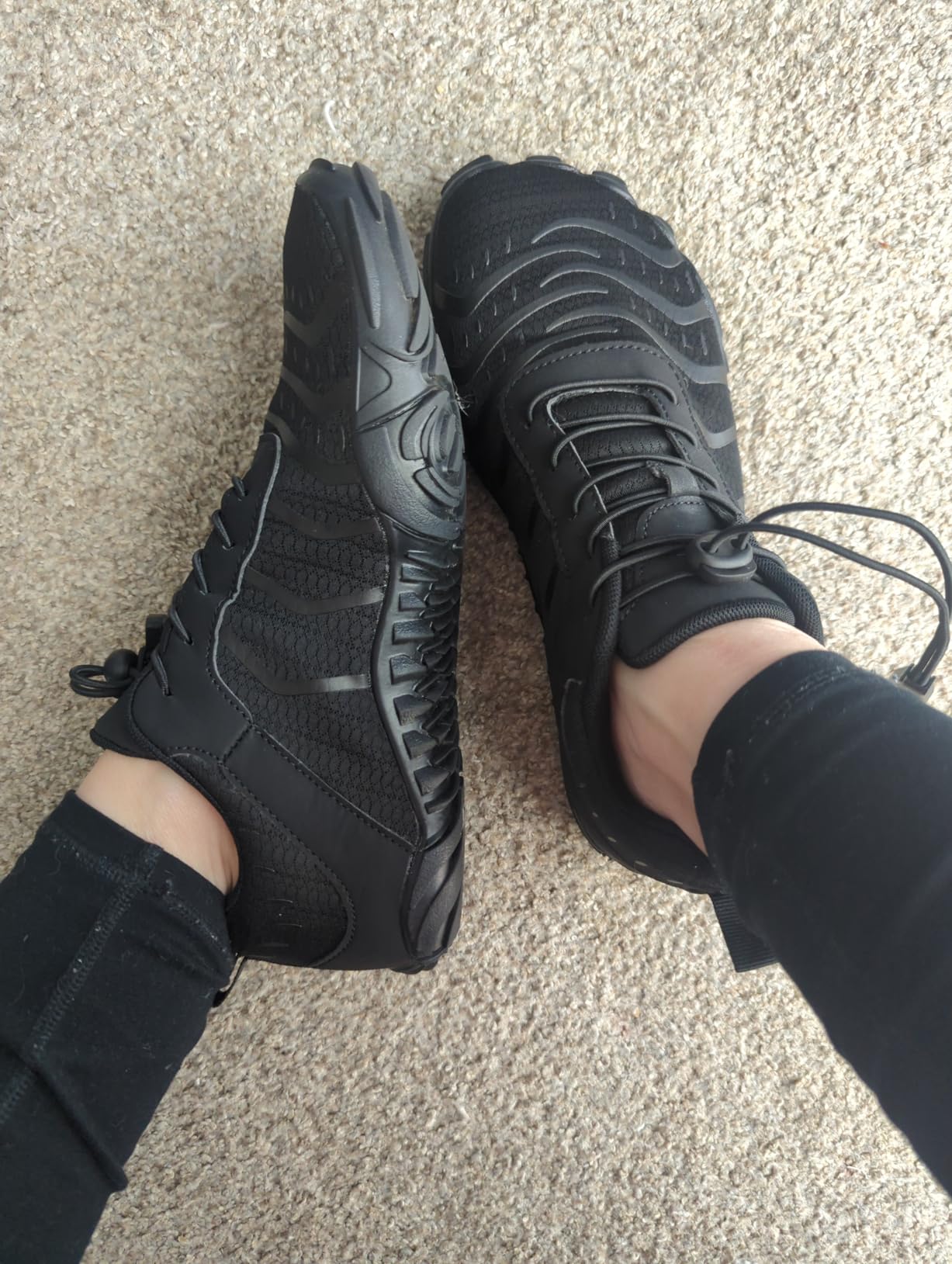
Let’s break down their main claims:
Wide Toe Box – DELIVERED
This is legit. Your toes can spread naturally, which makes a huge difference for balance and comfort. If you’ve been dealing with cramped toes in traditional shoes, this feels like freedom.
Zero Drop – DELIVERED
True zero drop design. My posture improved noticeably over the 6-week test period. Less back tension, better hip alignment during workouts.
Breathability – MOSTLY DELIVERED
The mesh upper does breathe well, though not as dramatically as they claim. Your feet will still sweat during intense workouts, but they dry quickly.
Anti-Slip Soles – DELIVERED WITH CAVEATS
The grip is solid on most surfaces, but they’re not magic. Wet concrete can still be slippery, and polished floors require caution. But for general use, traction is reliable.
Durability Claims – JURY’S STILL OUT
After 6 weeks of hard use, they’re holding up better than expected for a $35 shoe. Some minor wear on the sole, but no structural issues. Based on other reviews, expect 6-12 months of regular use.
My Overall Assessment
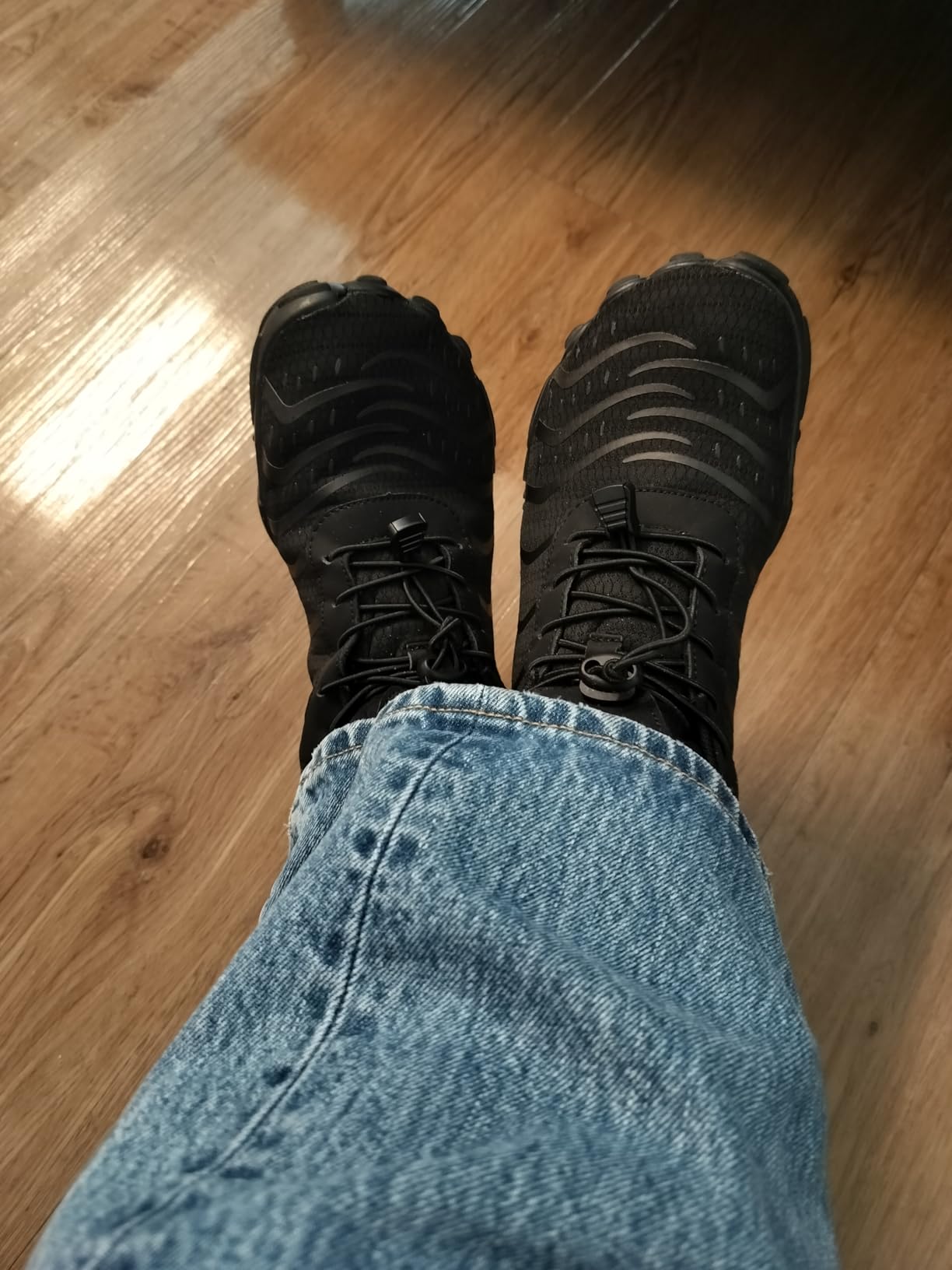
After 6 weeks of putting these through everything from deadlift sessions to hiking trails, I’m genuinely impressed with what you get for $35.
Detailed Scoring
| Category | Score (1-10) | Notes |
|---|---|---|
| Comfort | 8.5 | Excellent once adapted, wide toe box is a game-changer |
| Build Quality | 7.5 | Better than expected for price point, solid construction |
| Performance | 8.0 | Excellent for gym/training, good for casual hiking |
| Value for Money | 9.0 | Outstanding value at $35, hard to beat |
| Versatility | 8.5 | Great for multiple activities, true multi-use shoe |
| Sizing/Fit | 7.0 | Runs small, but great fit when sized correctly |
| OVERALL RATING | 8.1 | Excellent budget barefoot option |
What Other Guys Are Saying
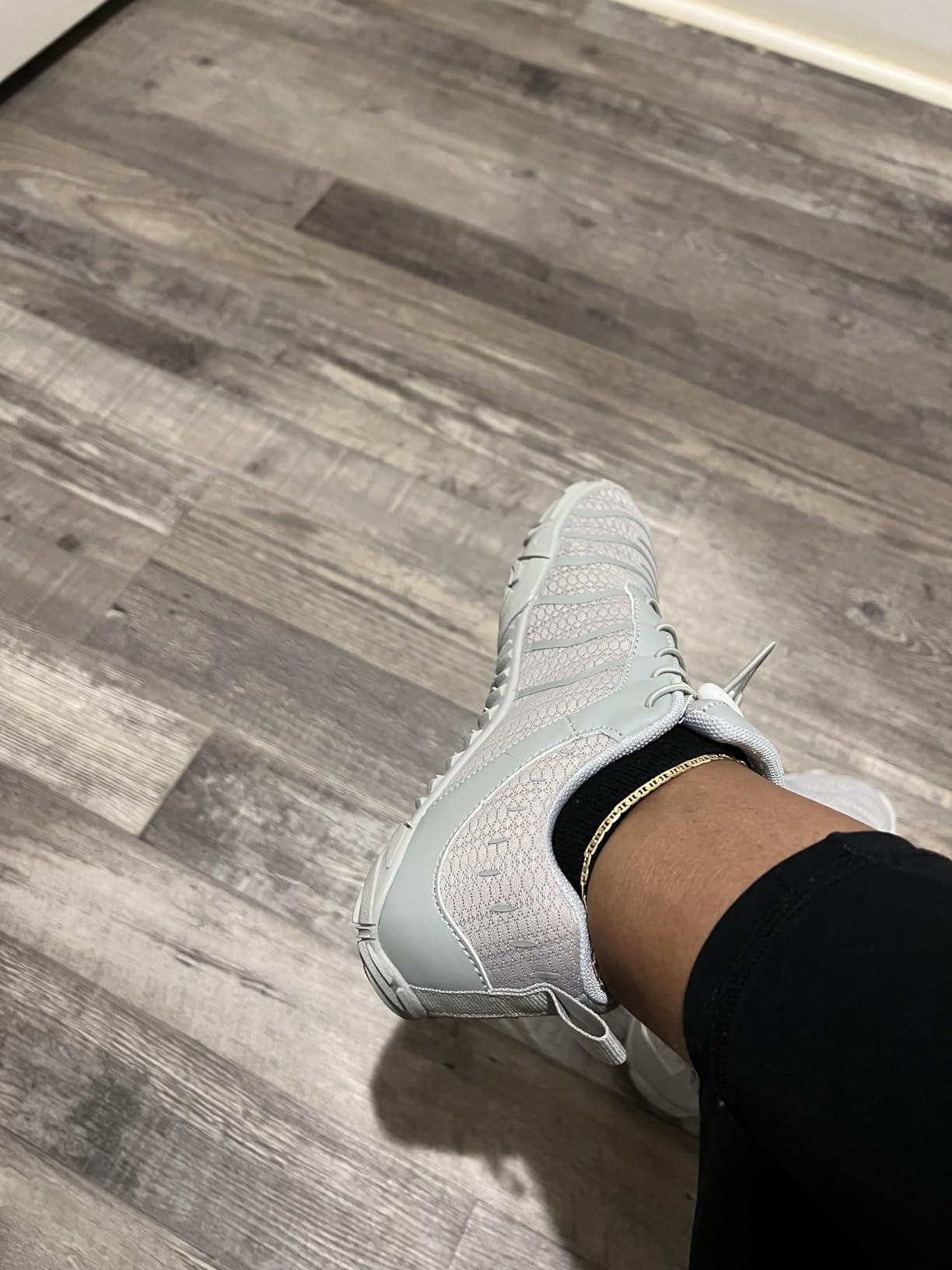
The community feedback is overwhelmingly positive. Guys consistently mention:
The Good: Comfort exceeds expectations, excellent value, wide toe box relief, improved balance and posture, versatility across activities, lightweight feel.
The Concerns: Sizing runs small (buy up a half size), durability questions for intensive use, adjustment period required, minimal protection on rough terrain.
Several users mentioned using these for specific medical needs – plantar fasciitis relief, bunion comfort, and foot recovery. While I can’t make medical claims, the feedback is consistently positive for these conditions.
Value Assessment
At $35, these punch way above their weight class. Compare this to $150+ premium barefoot shoes, and while you’re not getting the same materials or brand reputation, you’re getting 80% of the experience for 25% of the price.
For someone curious about barefoot shoes but not ready to invest $150+, this is a perfect entry point. If you love the concept, you can always upgrade later. If it’s not for you, you’re not out a ton of money.
Final Verdict
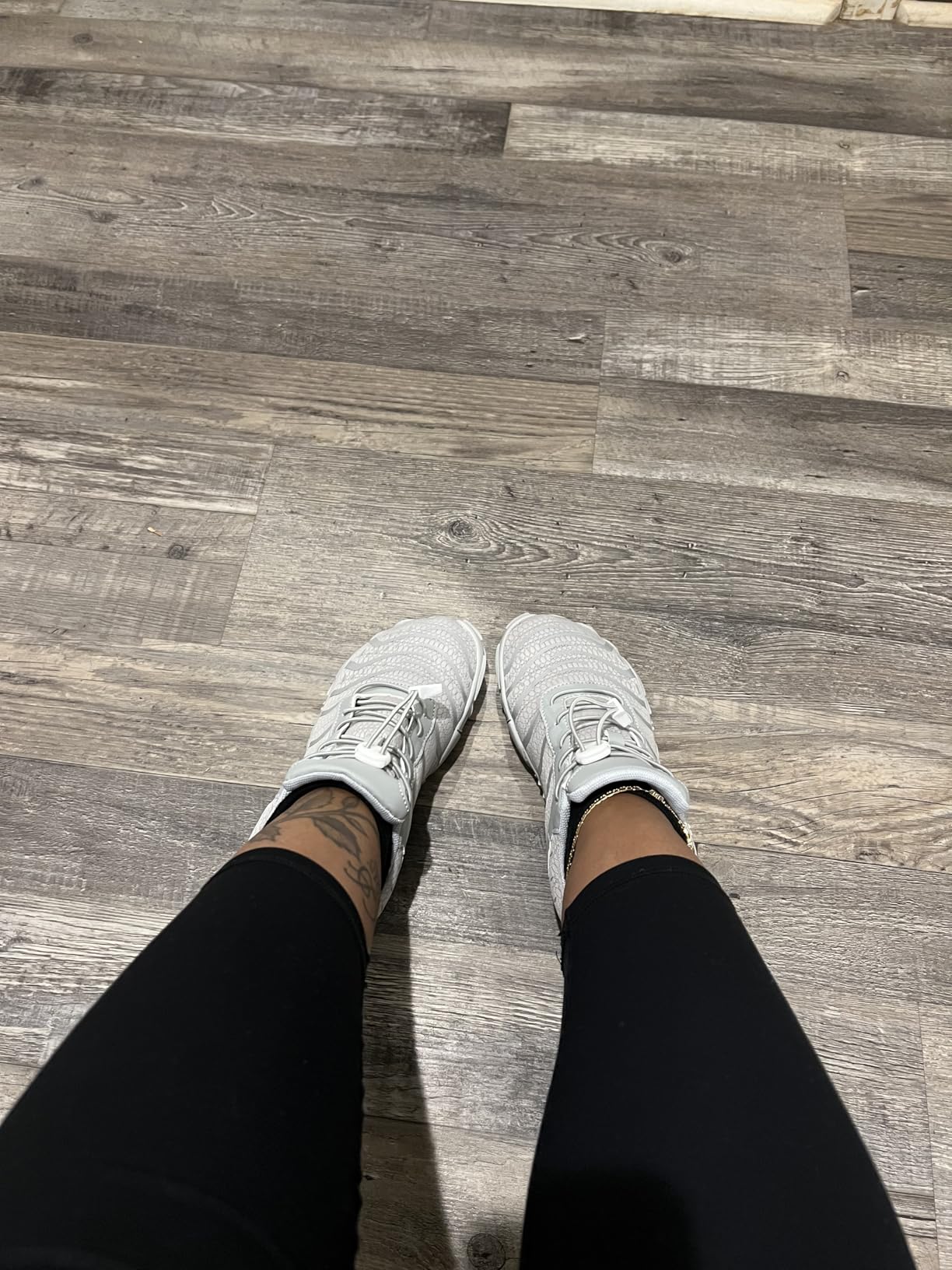
The Good and The Bad
| THE GOOD | |
|---|---|
| ✅ Outstanding value at $35 | ✅ True wide toe box design |
| ✅ Genuine zero drop construction | ✅ Excellent multi-activity versatility |
| ✅ Better build quality than expected | ✅ Great for gym/weightlifting |
| THE BAD | |
| ❌ Runs small (size up half size) | ❌ Durability unknown long-term |
| ❌ Color more yellow than expected | ❌ Requires adaptation period |
| ❌ Minimal protection for technical terrain | ❌ Elastic laces can loosen |
Who Should Buy the Barefoot Shoes Men Women?
Perfect for:
– Guys curious about barefoot shoes but not ready for premium pricing
– Multi-sport athletes needing versatile training shoes
– People with wide feet or toe cramping issues
– Weightlifters wanting better ground connection
– Anyone dealing with foot pain in traditional shoes
– Budget-conscious buyers wanting quality footwear
Skip if you:
– Need maximum foot protection for technical terrain
– Prefer traditional cushioned athletic shoes
– Want premium materials and brand reputation
– Need shoes for long-distance running (unless already barefoot-adapted)
– Can’t handle a 2-3 week adaptation period
Better Options for Specific Needs
More protection: Merrell Trail Glove or Xero Shoes TerraFlex
Premium materials: Vivobarefoot Primus or Altra Lone Peak
Running focus: Merrell Vapor Glove or New Balance Minimus
Even cheaper: Whitin Barefoot shoes (though quality may vary)
Final Recommendation
After 6 weeks of real-world testing, I’m genuinely impressed with these barefoot shoes. At $35, they deliver surprisingly good performance and quality. The wide toe box, zero drop design, and multi-activity versatility make them an excellent entry point into barefoot footwear.
Yes, they run small (size up), and yes, you’ll need an adaptation period. But for the money, you’re getting a legitimate barefoot experience that could transform how your feet feel and function.
My recommendation? If you’re curious about barefoot shoes, this is a low-risk way to try the concept. At this price point, even if they only last 6-8 months of regular use, you’re getting excellent value.
🛒 Get the best deal:
Frequently Asked Questions
Do these really need a half size up?
Yes, absolutely. I wear size 10 in Nike/Adidas, went with 10.5 in these and it’s perfect. Multiple reviewers confirm they run about a half size small. When in doubt, go up rather than down.
How long is the adjustment period?
Expect 1-2 weeks for your feet and calves to adapt to zero drop. Start with shorter wear times and gradually increase. Your body needs time to strengthen the muscles that traditional shoes have been supporting.
Can I use these for running?
Yes, but with caveats. If you’re new to barefoot running, start very slowly – maybe 0.5 miles at first. The transition from heel striking to forefoot striking takes time. These work great for shorter distances once adapted.
How do they handle water?
They dry quickly and handle light water exposure well. Several users mentioned using them as water shoes for streams and pools. They’re not waterproof, but they don’t hold water either.
What about arch support?
These have minimal arch support by design – that’s the point of barefoot shoes. Your feet are supposed to do the work naturally. If you have serious arch concerns, consult a podiatrist before switching to barefoot footwear.
How’s the durability compared to $150+ barefoot shoes?
Obviously not as robust as premium options, but better than expected for $35. Based on my testing and user reviews, expect 6-12 months of regular use. For occasional use, they could last longer.
Do I need special socks?
Not required, but thin socks work best if you choose to wear them. Many users go sockless once adapted. If you wear thick socks, you might need to size up even more.
Are they good for people with plantar fasciitis?
Many users report relief, but I can’t make medical claims. The zero drop and natural foot position may help some people, but consult your doctor before making changes if you have medical foot conditions.
Get the best price on Amazon:

